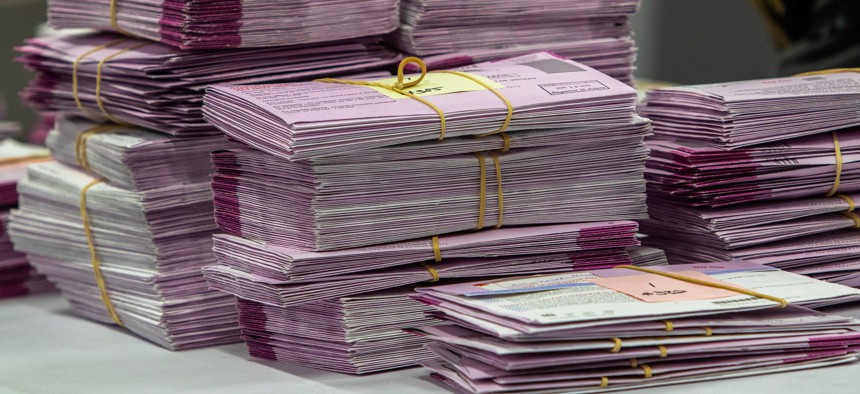New York politics is more upside down these days than usual. Most notably, due to redistricting, New Yorkers will vote in two primary dates this year – one on Tuesday for governor, lieutenant governor and Assembly, and another in August for Congress and state Senate.
Who wins the primary races will be much less about “message” and voter persuasion than about a simple game of numbers – in particular the two T’s: turnout and targeting.
Elections are about many things – debates and the clash of ideas, TV ads and mailboxes overflowing with direct mail, and of course lots of passion, energy and excitement. But elections are most fundamentally about basic arithmetic, and which candidate can get more votes than anyone else. For that reason, the winning candidates this summer will be those who demonstrate a mastery of math in a few basic areas.
Voter turnout
New York’s two primaries dates this summer are certain to confuse people expecting a single date, and that fact will depress turnout. Furthermore, count on a good number of voters who take a summer vacation in late August to overlook the need to request an absentee ballot. And turnout in Democratic primaries will also be softer than usual due to an enthusiasm gap versus the GOP. About 60% of voters who have cast a primary ballot in a state that has held a primary election so far in 2022 are Republicans. If Democrats are not turning out and voting in primaries, then that’s a sign many will likely stay home in November – a very worrying trend for Democrats.
That’s why in today’s political environment, the winning primary candidates will be the ones who figure out which voters will turn out and then build and mobilize a coalition of voters to win. But that task is becoming far harder to do in an age of “surge” and “drop off” voters.
According to data from Engage Voters, 285,378 Democratic primary voters in the June 2021 mayoral race were what I would call “unexpected voters,” as they had not previously voted in recent Democratic primaries. Conversely, 163,979 Democratic primary voters who were “expected” to turn out a year ago because they had voted in at least two of the recent Democratic primaries didn’t vote.
This data paints a pretty clear and unmistakable conclusion: traditional ways that campaigns target likely voters – “let’s mail all Democrats who voted in the prior two primaries” – is no longer an accurate way to forecast who are the most likely voters. Instead, campaigns are developing sophisticated statistical models to pinpoint the most likely voters and their supporters.
Absentee ballots
Because primary turnout will be modest, count on absentee ballots to play a key role this summer in many primary races across the state. Eric Adams became New York City mayor because he beat Kathryn Garcia by 7,197 votes in ranked-choice voting last year. In that election, 125,000 voters in the Democratic primary voted absentee – far more than Adams’ modest margin of victory. In a low turnout election, on Tuesday and in August, a strong absentee ballot program will almost certainly prove to be decisive in multiple close races.
Voter targeting
While we don’t know how each voter casts their ballot in an election, we can examine the smallest political geography that the Board of Elections releases: election districts. Across New York City, there are about 3,000 election districts. What we found with our analysis is that certain election districts vote the same way ideologically election after election – no matter the year, the office or the political environment. Some of this appears to be at first glance pretty obvious when we examine election returns by Assembly district.
When we do that analysis, we see that places like Central Harlem, Central Brooklyn and Southeast Queens generally voted for middle-of-the-road Democrats and they will vote that way again this summer, while much of the Upper West Side, Park Slope and Western Queens supports more progressive candidates, and will do so again this summer.
However, the story is not nearly as simple as it appears. A significant number of election districts in so-called progressive parts of the city like the Upper West Side, Park Slope and Western Queens actually voted in high numbers for moderate Democrats. And they did it again and again, election after election, in large numbers to support candidates like Joe Biden, Andrew Cuomo, Eric Adams and Donovan Richards. And likewise, political progressives performed well in many “moderate” election districts. Almost without exception, no borough, no community and no neighborhood is politically monolithic. Therefore, only by examining past election return data closely over a series of different elections at the election district level does the richness of the election return data become apparent.
Why does this matter? It matters because most candidates don’t have enough money to reach all voters with a sufficient number of repetitions necessary to have their message break through and be heard. Therefore, targeting ideologically aligned voter segments, based on prior election history, are going to be the most reliable votes to win. Voter targeting is basic math and the smartest use of a campaign’s finite resources.
So New York politicians – get out your calculators and spreadsheets – your math skills are going to determine your political success this summer.
Bradley Honan and Elisabeth Zeche are partners at the Democratic polling and data analytics firm Honan Strategy Group.


